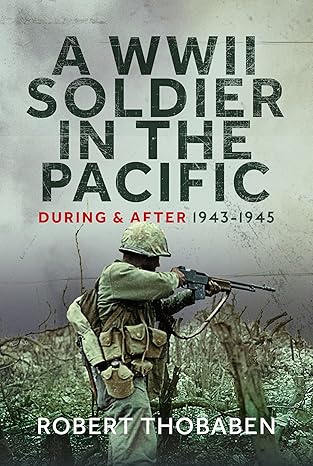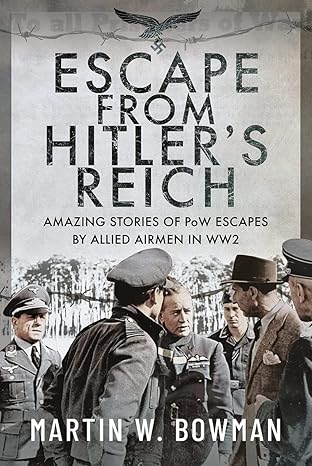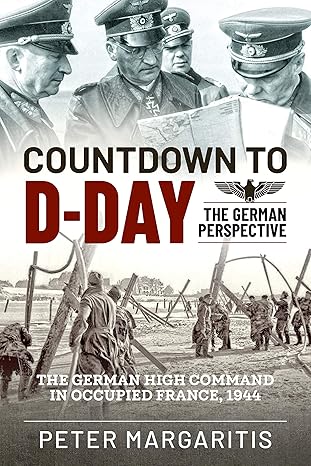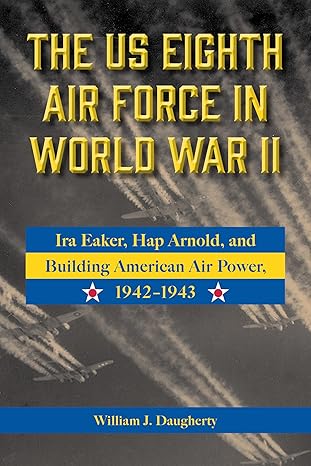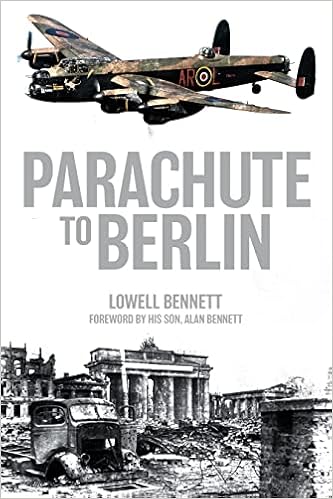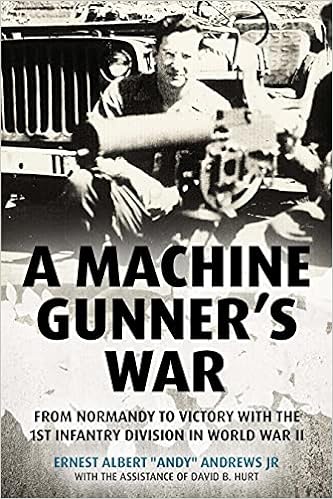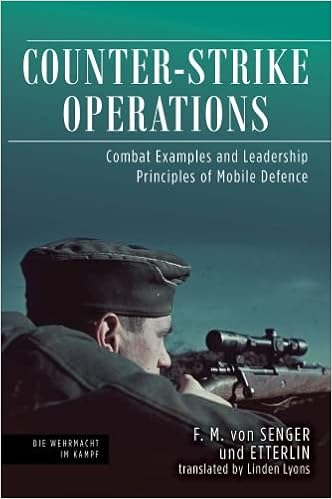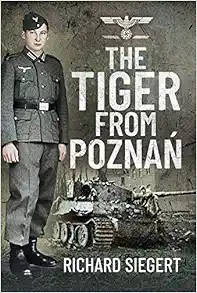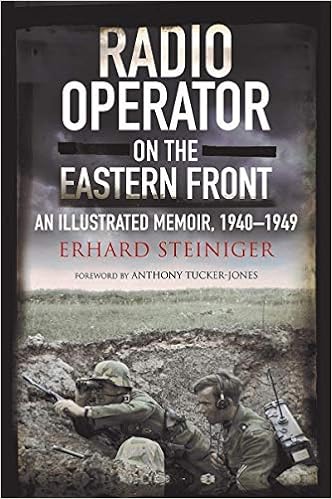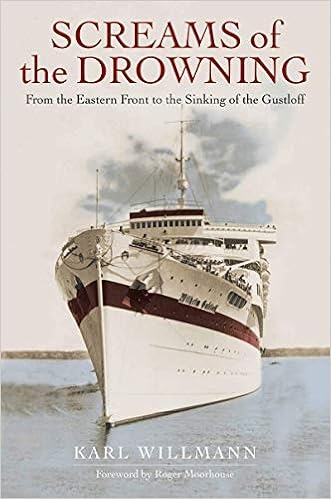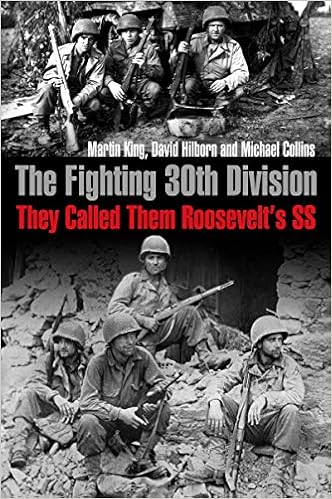The Real Story of John Ford's Navy on D-Day
 By Tom Hogan
By Tom Hogan
In his 1994 book about D-Day, historian Stephen Ambrose wrote that during the Normandy landings, Hollywood director John Ford led a team of cameramen on Omaha Beach whose job was to “take movies of everything.” As the battle raged, Ford dashed about, placing his men behind obstacles to shield them from enemy fire. Their film—most of it in color—was then sent back to London for processing but was never seen by the public. “Apparently,” said Ford, “the Government was afraid to show so many American casualties on the screen.” The Ford quotes came from a 1964 interview published in The American Legion Magazine. Ford went on to say he believed his footage had been preserved after the war. After the report appeared in Ambrose's book, historians began a decades-long hunt for the missing film. It has never been found. Now, recently discovered documents from the US National Archives shed new light on the lost film of D-Day.
The Battle of Leyte Gulf
By MSG James F. Seifert Jr.
During World War II, many land, sea, and air conflicts shaped the course of victories and setbacks for the United States in the Pacific region. The Navy’s Pacific Fleet endured several challenges before and during the battle consisting of command structure fluidity, land-based air forces, carrier-based air forces, and geographic force alignment changes. Toward the end of the war on the naval front, the Battle of Leyte Gulf in the Philippines punctuated the end of the Japanese naval threat (Hone, T., 2009). The battle lasted only four days, from 23-26 October 1944, off the coast of Leyte, Samar, and Mindanao islands, and claimed the lives of hundreds of thousands and hundreds of naval vessels and aircraft (Cutler, T. J., 1994). The American Navy’s effects on the Japanese naval forces ended their capacity to engage in conventional offensive operations with minimal losses to Americans (Hanson, V. D., 2017).
Escape From Hitler's Reich: Amazing Stories of PoW Escapes by Allied Airmen in WW2
 Review by Brian Williams
Review by Brian Williams
Martin W. Bowman’s Escape From Hitler’s Reich: Amazing Stories of POW Escapes by Allied Airmen in WW2 offers a unique look at how Allied aviators defied captivity in Germany’s Stalag camps. Published in November 2024 by Pen & Sword, this compact hardback unearths previously untold episodes of ingenuity and courage, drawing on newly uncovered documents and personal testimonies. Bowman, with over 100 published books, brings authenticity and authority to these accounts through his deep familiarity with wartime archives.
The book is structured so that it focuses on a single pilot or crew member’s bid for freedom—but within that framework lie stories of dazzling variety. Some airmen tunneled for months, risking collapse and discovery; others relied on forged credentials or bold disguises to blend in with civilian life.
An Overview of the 1944 Burma Campaign
By HD Bedell
The 1944 Burma Campaign is unique in World War II for both its aims and operations and one not frequently seen in popular WWII programming. The tragic drama, from individual survival to international political maneuvering, was played out in the seldom mentioned, but perhaps the most complex, theater of World War II – the China-Burma-India (CBI) Theater.[1] The United States Army role in the CBI Theater initially was planned as a task force supporting Chinese operations.[2] Committing significant numbers of American forces was considered unnecessary due to China's vast manpower reserves, and, in addition, combat commitments in Europe, North Africa, and the Pacific meant large numbers of American troops simply were not available. The task force units assigned were logistic and training personnel based in India with supplemental liaisons stationed in China.
Behind Enemy Lines: Raff’s Tunisian Task Force and Early Allied Cooperation in North Africa, 1942–43
By Carson Teuscher
Eighty years ago, inexperienced Anglo-American forces nervously waded ashore on the beaches of North Africa. The amphibious Allied landings known as Operation Torch constituted the first American combat deployment across the Atlantic in World War II. It was also the first time American and French soldiers had fought one another since the unofficial naval “Quasi-War” of 1798-1800, and, to that point in history, the largest amphibious invasion the world had ever seen. The landings went better than anticipated. Within three days, the invasion’s task forces secured their primary objectives. Vital ports, rail infrastructure, supply depots, and roads across the Maghreb lay safely in Allied hands. Disobeying orders from Vichy, French North African military commanders agreed to help the Anglo-Americans drive the Axis from the African continent. Almost immediately, the three newly-minted allies turned their gaze east to Tunisia—a prize they hoped to capture before the enemy arrived in force. The gambit to quickly capture Tunis would ultimately fail. Setbacks over the ensuing months tempered expectations for quick victory. Operating out of the heavily reinforced Tunis bridgehead, German and Italian mechanized units halted the anemic Allied advance in the foothills west of the city.
From The Boston Store To Corregidor: Fort Smith Man Did A Yeoman’s Job In World War II
By Chad Davis
In one form or another, the idiom “a yeoman’s job” pervades the anglophone world as a phrase to describe “very good, hard, and valuable work that someone does especially to support a cause, to help a team, etc.”[2] The dictionary defines a yeoman in various ways, from “a person who owns and cultivates a small farm” to “a naval petty officer who performs clerical duties.”[3] The United States (US) Naval Institute describes the enlisted yeoman rating as one of the most “enduring” to serve on our country’s Navy combat team.[4] Because nearly all types of Navy units require a yeoman, Sailors of that particular rating can be found serving in virtually any wartime scenario. Throughout World War II, one petty officer of the US Navy, Chief Yeoman Theodore Richard Brownell (1905-1990) of Fort Smith, Arkansas, served his country in ways that epitomize a yeoman’s job ― as well as another phrase associated with his home town: true grit.
Okinawa: Isolation or Annihilation?
By Russell Moore
The battle of Okinawa was a bloody preview of what an invasion of the Japanese home islands could look like. Okinawa was the costliest battle between US and Japanese forces in World War II. General Buckner, who led the 10th army on Okinawa, has received a mix of criticism and praise for the way he conducted the campaign. Tragically General Buckner died right before the battle ended so there was no opportunity to ask him to reflect on his command decisions during the battle. Most criticism has been focused on Buckner’s reluctance to launch flanking amphibious assaults on the entrenched Japanese troops on the southern part of the island. This forced his Army and Marine soldiers into costly frontal attack after frontal attack. His defenders say the amphibious flanking attacks were too risky and worried about an Anzio type of stalemate or worse. But was there another alternative that should have been considered? Could Buckner have considered a strategy of isolation instead of annihilation and perhaps saved the lives of thousands of US forces?
The loss of the submarines Argonaut, Amberjack, Grampus, and Triton
By Jeffrey Cox
It takes a special kind of person to serve in a submarine. Warships and support ships are cramped enough, isolated enough when in the middle of the ocean and no land in sight, but one can at least go on deck and see the ocean, the sky, the sun. Maybe other ships. Maybe planes flying around. There is still a visible connection to the world outside the ship. On a submarine, once that boat submerges, that’s it. Your world is limited to the submarine. The control room, the torpedo rooms, the engine room, the wardroom. That’s it. There is nothing outside that metal box. Nothing you can see, unless you’re one of the lucky few to have access to the periscope. But you know there’s a mysterious undersea world outside that metal box. You can’t see it, but the sound guy can hear it, and if those sounds are loud enough, you can, too. The eerie, mournful calls of various sea creatures outside the hull. Calls that can be unnerving, but represent almost no threat, unless a giant baleen whale tries to mate with the submarine or a great white shark tries to eat it.
The Tragedy of the Mark XIV Torpedo in World War II
By David W. Tschanz
Fizzling fish, wrong tactics and incompetent commanders -- ingredients for disaster simmering below the waves aboard American submarines -- how many years did they add to World War II? A strong case has been made, by authors as varied as Jim Dunnigan, John Keegan and George Friedman, that the leading cause of the eventual defeat of the Japanese in World War II was the choke hold on its commercial shipping achieved by the Allies. Friedman, in his thought provoking if flawed The Coming War With Japan, argues that aerial strategic bombing had little effect on Japanese production capacity. But production capacity is useless without raw materials. US submarines, ranging on the north-south routes from the Indies and along the Japanese coast, systematically interdicted the flow of strategic materials. By the end of the war Japanese imports of bulk commodities such as iron ore and oil had plunged almost 90% from prewar levels.
Tiger 131: The Mysterious British reports
By Bruce Oliver Newsome, Ph.D.
Tiger 131 is the most famous tank in the world: the first of its type recovered to Britain; the most studied and photographed tank in Allied intelligence; and the only running Tiger in the world today. The British reports have always been puzzling: their numbering and dating suggest that some reports are missing or were never completed; some reports contradict others; some are not dated at all; beautiful drawings and paintings were created, but appear without captions. Now, after a survey of all surviving reports, from Britain to North America, their original condition can be revealed.[1] The implications for Allied intelligence are not pretty. The Tiger was the product of a long program by that name, with several projects. In fact, the program produced two different models of tank named “Tiger.” The other type was a losing bid by Ferdinand Porsche: he produced at least one pilot tank and one full-production tank in the program, plus another 90 hulls that were converted into self-propelled guns.
The United States Army in World War II
By Richard Anderson
The US Army of World War II was created from a tiny antebellum army in the space of just three years. On 30 June 1939 the Regular Army numbered 187,893 officers and enlisted men, including Philippine Scouts, and including 22,387 in the Army Air Corps. On the same date the National Guard totaled 199,491 men. The major combat units included nine infantry divisions, two cavalry divisions, and a mechanized cavalry (armored) brigade in the Regular Army and eighteen infantry divisions in the National Guard. Modern equipment was for the most part nonexistent and training in the National Guard units varied from fair to poor. The outbreak of war in Europe in September 1939 led to a gradual expansion of the Army. On 27 August 1940, Congress authorized the induction of the National Guard into Federal service. On 16 September 1940 Congress passed the first peacetime draft in United States history. However, the draftees were inducted for only one year.
Terror Floated from the Skies
By Walter F. Giersbach
The war in Asia was far away when a family in Bly, Oregon, triggered a 15-kg anti-personnel bomb. Instantly killed on May 5, 1945, were Elsye Mitchell, a pregnant mother, and five teenaged children. Elsye almost didn’t want to go on the picnic that day, but she had baked a chocolate cake in anticipation of their outing. The 26-year-old was pregnant with her first child. On that morning she decided she felt decent enough to join her husband, Rev. Archie Mitchell, and a group of Sunday school children as they set out for nearby Gearhart Mountain in southern Oregon. While Archie parked their car, Elsye and the children stumbled upon a strange-looking object in the forest. The minister would later describe that moment to local newspapers: “I…hurriedly called a warning to them, but it was too late. Just then there was a big explosion. I ran up – and they were all lying there dead.” Lost in an instant were his wife and unborn child, alongside Eddie Engen, 13, Jay Gifford, 13, Sherman Shoemaker, 11, Dick Patzke, 14, and Joan “Sis” Patzke, 13. Against a scenic backdrop far removed from the war raging across the Pacific, Mitchell and five other children became the first — and only — civilians to die by enemy weapons on the United States mainland during World War II.. [1]
The Search for America's Battlecruiser
By Edward J. Langer
The battlecruiser was thought of as the ship that could do everything. Scout, do battle with cruisers and destroyers, protect shipping lanes and lines of communication and join the battle line and slug it out with enemy battlecruisers and battleships. Great Brittan and Germany adopted this theory, the United States Navy long debated it, but eventually gave in only to see them scraped or converted into aircraft carriers. But did the US Navy actually have a battlecruiser and not acknowledge it? Two classes of heavy cruisers come close to fulfilling the roles of the battlecruiser. This would include the USS Alaska class and the USS Des Moines class. One of the most hotly debated ship types in the United States Navy was the battlecruiser. Other navies had them in service or under construction - should the United States follow suit? As early as the summer of 1903 at the US Naval College's Summer Conference, it was suggested that the navy develop a "fast Battleship" mounting four 12" guns replacing armored cruisers and supplementing the battle line. In May of 1904 the British developed plans that would lead to the development of the all big gun battleship and the idea was presented for a big 9.2-inch gun fast cruiser later changed to 12-inch guns. The battle of Tsushima between Russia and Japan on May 27-28, 1905 showed the value of the battleship, but not any battleship.
Island Hopping in World War II: Trench Warfare at Sea
By LtCol Richard Beil USMC (Ret.)
Those who study military history are familiar with how strict adherence to the detailed mobilization schedule of the Schlieffen Plan contributed to the beginning of World War I. Count Alfred von Schlieffen, Chief of the German General Staff from 1891 to 1906 was, like all German officers, schooled in Clausewitz’s precept, “The heart of France lies between Belgium and Paris.“ [1] Since the Franco-Russian alliance of 1892, Germany considered itself surrounded. Should war be deemed necessary, von Schlieffen saw it as a two-front war. In such a war, he wrote, “the whole of Germany must throw itself upon one enemy, the strongest, most powerful, most dangerous enemy, and that can only be France.” [2] Schlieffen’s plan for 1906, the year he retired, called for a 6 week campaign with seven-eighths of Germany’s armed forces dedicated to the defeat of France while one-eighth held the eastern frontier against Russia. Following the defeat of France, the entire German army would then face the second enemy.
Operation Compass 1940
By Roger Daene
American General George S. Patton once said that you always attack and never let your enemy rest. ("Quote Fancy", n.d.) That was also the motto of his adversary German Field Marshall Erwin Rommel. Rommel would make his name in France 1940 by living out that old maxim of war. His career and legend would begin to soar in North Africa when he arrived in March of 1941. Against incredible odds and harsh conditions, Rommel would prove again and again that an enemy can never be allowed to rest. However, he was not the first to demonstrate that maxim to be true. Before his arrival, British Generals Archibald Wavell and Richard O'Connor would face tilted odds in North Africa. Their offense began as a local operation to recapture some areas taken by the Italians in the opening months of the war and to push them back to Libya. It ended with nearly all of Libya captured and less than 20,000 Italians escaping out of 150,000. 30,000 British, Indian and Australian soldiers never let the enemy rest. On June 10th, 1940 Italy declared war on both France and Great Britain. France surrendered after the sledgehammer blows of the Germans in just six weeks and shortly after Italy's entrance into the war.
Tancred Borenius – Forgotten intelligence hero or messenger for wartime Churchillian coup?
By John Harris
The spring of 1941 saw wartime Britain at its most vulnerable and desperate. Nightly bombing raids over the long cold winter of 1940 by the German Luftwaffe had sought to bring the Churchill led government to the negotiating table prior to the implementation of Hitler’s Operation Barbarossa, originally timetabled for May 15th 1941. Contrary to the usual post war history, many in positions of influence in Britain also favoured a negotiated settlement. All they knew and saw was the nightly devastation from an enemy far superior to themselves in terms of current offensive power. They certainly didn't know of the potential respite from any future German invasion of Russia; indeed the two countries were still active partners in a mutually beneficial trade agreement; their so called Commercial agreement, originally signed in February 1940. The previous summer, Britain had just survived the humiliation of Dunkirk and the subsequent Battle of Britain was only a victory in that Nazi Germany had been denied the opportunity of a sea bourn invasion in the late summer / autumn of 1940. Britain was battered, bombed and very much alone. The USA whilst cautiously supportive, were still politically isolationist and Britain's only substantive military aid had come from the remnants of the various fleeing continental armies that had managed to make their way to Britain just in front of their invaders.
Soviet rifle corps in the Russo-German War, 1945
By Bill Wilson
For many in the Wehrmacht, the Red Army was for the entire war a poorly-understood force. German intelligence had some idea of how large the Red Army was at various points during the war, but German misconceptions about the Soviet forces have endured in the popular imagination, lending vague notions of "red hordes" and overwhelming numerical superiority. Even though the structure of these forces has been made available by Russian sources, it remains a little known topic of the Second World War. Significant among the obscuring factors is the sheer number of formations fielded by the Soviets. Even their largest field force, the fronts, would be difficult to list from memory. Likewise, the situation for combined-arms armies and, further down, rifle corps is even more problematic because of their quantity. The rifle corps are not well known, and a misconception lingers that the Soviets abolished the echelon of rifle corps in late 1941 for the duration of the war. While it is true this command echelon almost disappeared from the Red Army during this period, it did not vanish completely, and was in fact rebuilt from late 1942 forward as the wartime structure of the Soviet forces matured.
The Morality of Okinawa - Applying the Doctrine of 'Just War'
By LtCol Richard Beil USMC(Ret.)
In any discussion about war, there is a vast gulf between the pacifist perspective that all war is wrong, and the realist perspective that all's fair in war, sometimes glibly expressed as just nuke ‘em and be done with it. In the Beatitudes, Jesus tells us "blessed are the peacemakers" (Matt. 5:9). Elsewhere, in the Sermon on the Mount, he tells us "if any one strikes you on the right cheek, turn to him the other also" (Matt. 5:39). From such verses, some have concluded that Christianity is a pacifist religion and that violence is never permitted. But the same Jesus elsewhere acknowledges the legitimate use of force, telling the apostles, "let him who has no sword sell his mantle and buy one" (Luke 22:36). How are these passages to be reconciled? Between pacifism and realism lies the concept of the Just War. Judgments on war and wartime conduct go back to Thucydides and the Melian Dialogue [1] in his History of the Peloponnesian War. In the Judeo-Christian tradition, there is the Just War doctrine of Saint Augustine of Hippo (354-430 A.D.) in the waning days of the Roman Empire. This tradition takes the position that, in certain cases, war is not only acceptable, but sometimes morally necessary in order to protect the innocent and avert a greater wrong. It divides moral judgment on war into two sets of ethical principles - those that apply to the reasons for going to war (Justice of War or jus ad bellum) and those that apply to actions taken while fighting (Justice in War or jus in bello).
France's Forgotten D-Day: Operation Dragoon and the Invasion of Southern France
By Bruce Malone
The United States Seventh Army’s invasion of the southern coast of France on 15 August 1944 is one of the least celebrated Allied combat operations of the Second World War. In the end, Operation Dragoon (originally named Operation Anvil) proved to be one of the most important Allied campaigns, yet it remains one of the most controversial Allied strategic decisions. The American decision to launch Operation Dragoon against strenuous British objections changed the Anglo-American Allied relationship for the duration of the war, as the United States, long the leader in materiel production and numbers of soldiers, assumed the role of strategic senior partner. From start to finish and long afterwards, Allied leaders hotly debated the merits of this campaign and its results. Supporters of the invasion, mostly American, point out its vital assistance to the campaign in northern France, while its detractors, mostly British, find fault for its negative influence on the difficult fight in Italy.[1] Often lost in these arguments are the actual results of this remarkable campaign. Despite contentious disagreements between American and British strategic planners and frustrations in joint planning and combined operations, Operation Anvil/Dragoon was a stunning success.
The Soviet Invasion of Manchuria and the Kwangtung Army
By Paul S. Teague
From the start of the twentieth century, the Japanese considered Russia, and later the Soviet Union as its potential primary adversary. Defeat in the Russo-Japanese war of 1904-1905 temporarily removed the Russian threat and the Japanese proceeded to garrison Manchuria. Initially this garrison consisted of two Imperial Japanese Army (IJA) divisions; however by 1910 this was reduced to six reserve battalions. In 1916 these reserve battalions were replaced by IJA regulars and in 1919 the Kwangtung Army was established with astrength of 10,000 soldiers by the IJA Order Number Twelve.[1] Officers in the Kwangtung Army considered themselves the guardians of Japan’s frontiers, and they believed the War Ministry did not appreciate the danger to Manchuria that the Soviets posed. The Kwangtung Army moved quickly to consolidate and expand control of Manchuria, and they began political maneuvers to establish a puppet government.[2] A group of Kwangtung Army officers led by Ishiwara Kanji judged that the moment was ripe for bold action.[3]
The Battle of Buna-Gona
By Paul S. Teague
In the South Pacific the Japanese wanted to establish a perimeter which the Allies would not be able to penetrate, this perimeter would also allow the Japanese to interdict the lines of communications between the United States and Australia, thus isolating Australia. In order to accomplish this, the Japanese planned to capture Port Moresby, New Guinea and to use the facilities there for ground based air support against the Americans and Australians. The Japanese also planned to construct a sea plane facility at Tulagi, and to construct an airfield on Guadalcanal. The Japanese intentions were to Take Port Moresby and Tulagi in order to secure air mastery of the Coral Sea and its shores. It was allied resistance to this that resulted in the Battle of the Coral Sea 4-8 May 1942.[1]
The Silent Service and the Turkey Shoot
By James Hinton
They called it the Great Marianas Turkey Shoot. American pilots flying from fifteen carriers met Japanese pilots from nine carriers and four islands in the waters just off of Saipan. The resulting battle was the greatest carrier battle of World War II. At the end of the fighting Japan had lost 80% of its employed aircraft, three carriers, and two oilers, and had failed to achieve any of its objectives. The U.S. carrier pilots were lauded and toasted for their victory, and are credited for effectively ending the Japanese carrier threat. In the seventy years since the Battle of the Philippine Sea took place it has been known as the pinnacle moment for Navy Aviation. 1942. The truth is far more complicated. While the Navy air arm did account for many of the relatively cheap Japanese planes from the carrier force, and their inexperienced, it wasn’t them that delt the harshest blows in the Marianas. Instead, it was the U.S. submarine fleet that did the lion’s share of destroying the virtually irreplaceable ships of the Japanese carrier fleet.
American Airborne Units in World War II
By Michael F. Dilley
This short history will cover those combat military groups, squadrons, battalions, regiments, divisions, and the one corps of U.S. airborne units in World War II. It will not include Army Air Corps units (such as the Air Commandos) or Troop Carrier units, or organizations that had American individuals in them who were airborne qualified and even made operational jumps, such as Army and Marine Corps members of the Office of Strategic Services (including those with Jedburgh teams and Operations Groups), or the multi-service, multi-national Special Allied Airborne Reconnaissance Force (which initially included women who had previously jumped into denied areas). The first plan to use parachute forces by American units was developed during World War I. On 17 October 1918, Brigadier General William P. (Billy) Mitchell, a later proponent of strategic aerial bombing, conceived the idea of dropping an American division by parachute from bomber aircraft into an area in the vicinity of Metz, Germany. The details of the planning were developed by Major Lewis H. Brereton, a member of Mitchell’s Air Service staff. Brereton would later serve as the commander of the First Allied Airborne Army during World War II as a Lieutenant General.
Czechoslovak Exile Units of WWII
By Kai Isaksen
In 1938, the 1,500,000-strong Czechoslovak Army was among the largest in Europe, and fairly well-equipped with modern weapons, including locally produced tanks and aircraft. On November 1st 1938, German troops entered the Sudetenland area of Czechoslovakia, occupying the entire region with almost no resistance from the Czech forces – only 3rd Battalion of the 8th Border Regiment briefly resisted advancing German troops before being ordered to lay down their weapons by the Czech High Command.
Published works on Second World War Orders of Battle for land forces
By Bill Wilson
The armies of the Second World War were typically large organizations the formation of which was made possible by the total war efforts of the combatant nations. Holding continuous front lines in Europe, particularly in the Soviet Union, demanded the mobilization of hundreds of divisions in addition to other elements by both sides. Orders of battle indicate which units were present in given battles and campaigns, as well as providing information useful for determining the assignments and subordination of particular units within the national military structure. The published works addressing orders of battle vary widely in their degree of comprehensiveness. Some have been published postwar as official works while others are commercial publications. Besides the published works, there are also primary sources available in the archives of the combatant nations. An evaluation of these primary sources is not in the scope of this article. This article will evaluate selected published order of battle works for Germany, the Soviet Union, Great Britain, France, and the United States.
Flying Tiger, Hidden Eagle
By Christopher Lyon
It was December of 1939, and the world was at war. Poland, Czechoslovakia, France, Italy, China, Great Britain, Russia and Japan all had seats at the highest stakes game the world had ever seen, but the United States was quite noticeably absent. Many historians have argued that Franklin Roosevelt did his utmost to propel the country into conflict with Germany and Japan, and when viewed through the lens of the Chinese conflict, this controversy is accentuated and brought to the fore. Although it would be two full years before the catastrophe at Pearl Harbor, it was in this critical month, when all Europe was falling under the sway of fascism, that the Roosevelt administration, and especially the president himself, was preparing for the coming storm. By mid-1940, the US was preparing to boost its support of the hard-pressed Chinese troops with a very significant number of advanced fighters, bombers, and hundreds of millions of dollars in aid.
 By Tom Hogan
By Tom Hogan
In his 1994 book about D-Day, historian Stephen Ambrose wrote that during the Normandy landings, Hollywood director John Ford led a team of cameramen on Omaha Beach whose job was to “take movies of everything.” As the battle raged, Ford dashed about, placing his men behind obstacles to shield them from enemy fire. Their film—most of it in color—was then sent back to London for processing but was never seen by the public. “Apparently,” said Ford, “the Government was afraid to show so many American casualties on the screen.” The Ford quotes came from a 1964 interview published in The American Legion Magazine. Ford went on to say he believed his footage had been preserved after the war. After the report appeared in Ambrose's book, historians began a decades-long hunt for the missing film. It has never been found. Now, recently discovered documents from the US National Archives shed new light on the lost film of D-Day.
The Battle of Leyte Gulf
By MSG James F. Seifert Jr.
During World War II, many land, sea, and air conflicts shaped the course of victories and setbacks for the United States in the Pacific region. The Navy’s Pacific Fleet endured several challenges before and during the battle consisting of command structure fluidity, land-based air forces, carrier-based air forces, and geographic force alignment changes. Toward the end of the war on the naval front, the Battle of Leyte Gulf in the Philippines punctuated the end of the Japanese naval threat (Hone, T., 2009). The battle lasted only four days, from 23-26 October 1944, off the coast of Leyte, Samar, and Mindanao islands, and claimed the lives of hundreds of thousands and hundreds of naval vessels and aircraft (Cutler, T. J., 1994). The American Navy’s effects on the Japanese naval forces ended their capacity to engage in conventional offensive operations with minimal losses to Americans (Hanson, V. D., 2017).
Escape From Hitler's Reich: Amazing Stories of PoW Escapes by Allied Airmen in WW2
 Review by Brian Williams
Review by Brian Williams
Martin W. Bowman’s Escape From Hitler’s Reich: Amazing Stories of POW Escapes by Allied Airmen in WW2 offers a unique look at how Allied aviators defied captivity in Germany’s Stalag camps. Published in November 2024 by Pen & Sword, this compact hardback unearths previously untold episodes of ingenuity and courage, drawing on newly uncovered documents and personal testimonies. Bowman, with over 100 published books, brings authenticity and authority to these accounts through his deep familiarity with wartime archives.
The book is structured so that it focuses on a single pilot or crew member’s bid for freedom—but within that framework lie stories of dazzling variety. Some airmen tunneled for months, risking collapse and discovery; others relied on forged credentials or bold disguises to blend in with civilian life.
An Overview of the 1944 Burma Campaign
By HD Bedell
The 1944 Burma Campaign is unique in World War II for both its aims and operations and one not frequently seen in popular WWII programming. The tragic drama, from individual survival to international political maneuvering, was played out in the seldom mentioned, but perhaps the most complex, theater of World War II – the China-Burma-India (CBI) Theater.[1] The United States Army role in the CBI Theater initially was planned as a task force supporting Chinese operations.[2] Committing significant numbers of American forces was considered unnecessary due to China's vast manpower reserves, and, in addition, combat commitments in Europe, North Africa, and the Pacific meant large numbers of American troops simply were not available. The task force units assigned were logistic and training personnel based in India with supplemental liaisons stationed in China.
Behind Enemy Lines: Raff’s Tunisian Task Force and Early Allied Cooperation in North Africa, 1942–43
By Carson Teuscher

Eighty years ago, inexperienced Anglo-American forces nervously waded ashore on the beaches of North Africa. The amphibious Allied landings known as Operation Torch constituted the first American combat deployment across the Atlantic in World War II. It was also the first time American and French soldiers had fought one another since the unofficial naval “Quasi-War” of 1798-1800, and, to that point in history, the largest amphibious invasion the world had ever seen. The landings went better than anticipated. Within three days, the invasion’s task forces secured their primary objectives. Vital ports, rail infrastructure, supply depots, and roads across the Maghreb lay safely in Allied hands. Disobeying orders from Vichy, French North African military commanders agreed to help the Anglo-Americans drive the Axis from the African continent. Almost immediately, the three newly-minted allies turned their gaze east to Tunisia—a prize they hoped to capture before the enemy arrived in force. The gambit to quickly capture Tunis would ultimately fail. Setbacks over the ensuing months tempered expectations for quick victory. Operating out of the heavily reinforced Tunis bridgehead, German and Italian mechanized units halted the anemic Allied advance in the foothills west of the city.
From The Boston Store To Corregidor: Fort Smith Man Did A Yeoman’s Job In World War II
By Chad Davis
In one form or another, the idiom “a yeoman’s job” pervades the anglophone world as a phrase to describe “very good, hard, and valuable work that someone does especially to support a cause, to help a team, etc.”[2] The dictionary defines a yeoman in various ways, from “a person who owns and cultivates a small farm” to “a naval petty officer who performs clerical duties.”[3] The United States (US) Naval Institute describes the enlisted yeoman rating as one of the most “enduring” to serve on our country’s Navy combat team.[4] Because nearly all types of Navy units require a yeoman, Sailors of that particular rating can be found serving in virtually any wartime scenario. Throughout World War II, one petty officer of the US Navy, Chief Yeoman Theodore Richard Brownell (1905-1990) of Fort Smith, Arkansas, served his country in ways that epitomize a yeoman’s job ― as well as another phrase associated with his home town: true grit.
Okinawa: Isolation or Annihilation?
By Russell Moore
The battle of Okinawa was a bloody preview of what an invasion of the Japanese home islands could look like. Okinawa was the costliest battle between US and Japanese forces in World War II. General Buckner, who led the 10th army on Okinawa, has received a mix of criticism and praise for the way he conducted the campaign. Tragically General Buckner died right before the battle ended so there was no opportunity to ask him to reflect on his command decisions during the battle. Most criticism has been focused on Buckner’s reluctance to launch flanking amphibious assaults on the entrenched Japanese troops on the southern part of the island. This forced his Army and Marine soldiers into costly frontal attack after frontal attack. His defenders say the amphibious flanking attacks were too risky and worried about an Anzio type of stalemate or worse. But was there another alternative that should have been considered? Could Buckner have considered a strategy of isolation instead of annihilation and perhaps saved the lives of thousands of US forces?
The loss of the submarines Argonaut, Amberjack, Grampus, and Triton
By Jeffrey Cox
It takes a special kind of person to serve in a submarine. Warships and support ships are cramped enough, isolated enough when in the middle of the ocean and no land in sight, but one can at least go on deck and see the ocean, the sky, the sun. Maybe other ships. Maybe planes flying around. There is still a visible connection to the world outside the ship. On a submarine, once that boat submerges, that’s it. Your world is limited to the submarine. The control room, the torpedo rooms, the engine room, the wardroom. That’s it. There is nothing outside that metal box. Nothing you can see, unless you’re one of the lucky few to have access to the periscope. But you know there’s a mysterious undersea world outside that metal box. You can’t see it, but the sound guy can hear it, and if those sounds are loud enough, you can, too. The eerie, mournful calls of various sea creatures outside the hull. Calls that can be unnerving, but represent almost no threat, unless a giant baleen whale tries to mate with the submarine or a great white shark tries to eat it.
The Tragedy of the Mark XIV Torpedo in World War II
By David W. Tschanz
Fizzling fish, wrong tactics and incompetent commanders -- ingredients for disaster simmering below the waves aboard American submarines -- how many years did they add to World War II? A strong case has been made, by authors as varied as Jim Dunnigan, John Keegan and George Friedman, that the leading cause of the eventual defeat of the Japanese in World War II was the choke hold on its commercial shipping achieved by the Allies. Friedman, in his thought provoking if flawed The Coming War With Japan, argues that aerial strategic bombing had little effect on Japanese production capacity. But production capacity is useless without raw materials. US submarines, ranging on the north-south routes from the Indies and along the Japanese coast, systematically interdicted the flow of strategic materials. By the end of the war Japanese imports of bulk commodities such as iron ore and oil had plunged almost 90% from prewar levels.
Tiger 131: The Mysterious British reports
By Bruce Oliver Newsome, Ph.D.
Tiger 131 is the most famous tank in the world: the first of its type recovered to Britain; the most studied and photographed tank in Allied intelligence; and the only running Tiger in the world today. The British reports have always been puzzling: their numbering and dating suggest that some reports are missing or were never completed; some reports contradict others; some are not dated at all; beautiful drawings and paintings were created, but appear without captions. Now, after a survey of all surviving reports, from Britain to North America, their original condition can be revealed.[1] The implications for Allied intelligence are not pretty. The Tiger was the product of a long program by that name, with several projects. In fact, the program produced two different models of tank named “Tiger.” The other type was a losing bid by Ferdinand Porsche: he produced at least one pilot tank and one full-production tank in the program, plus another 90 hulls that were converted into self-propelled guns.
The United States Army in World War II
By Richard Anderson
The US Army of World War II was created from a tiny antebellum army in the space of just three years. On 30 June 1939 the Regular Army numbered 187,893 officers and enlisted men, including Philippine Scouts, and including 22,387 in the Army Air Corps. On the same date the National Guard totaled 199,491 men. The major combat units included nine infantry divisions, two cavalry divisions, and a mechanized cavalry (armored) brigade in the Regular Army and eighteen infantry divisions in the National Guard. Modern equipment was for the most part nonexistent and training in the National Guard units varied from fair to poor. The outbreak of war in Europe in September 1939 led to a gradual expansion of the Army. On 27 August 1940, Congress authorized the induction of the National Guard into Federal service. On 16 September 1940 Congress passed the first peacetime draft in United States history. However, the draftees were inducted for only one year.
Terror Floated from the Skies
By Walter F. Giersbach
The war in Asia was far away when a family in Bly, Oregon, triggered a 15-kg anti-personnel bomb. Instantly killed on May 5, 1945, were Elsye Mitchell, a pregnant mother, and five teenaged children. Elsye almost didn’t want to go on the picnic that day, but she had baked a chocolate cake in anticipation of their outing. The 26-year-old was pregnant with her first child. On that morning she decided she felt decent enough to join her husband, Rev. Archie Mitchell, and a group of Sunday school children as they set out for nearby Gearhart Mountain in southern Oregon. While Archie parked their car, Elsye and the children stumbled upon a strange-looking object in the forest. The minister would later describe that moment to local newspapers: “I…hurriedly called a warning to them, but it was too late. Just then there was a big explosion. I ran up – and they were all lying there dead.” Lost in an instant were his wife and unborn child, alongside Eddie Engen, 13, Jay Gifford, 13, Sherman Shoemaker, 11, Dick Patzke, 14, and Joan “Sis” Patzke, 13. Against a scenic backdrop far removed from the war raging across the Pacific, Mitchell and five other children became the first — and only — civilians to die by enemy weapons on the United States mainland during World War II.. [1]
The Search for America's Battlecruiser
By Edward J. Langer
The battlecruiser was thought of as the ship that could do everything. Scout, do battle with cruisers and destroyers, protect shipping lanes and lines of communication and join the battle line and slug it out with enemy battlecruisers and battleships. Great Brittan and Germany adopted this theory, the United States Navy long debated it, but eventually gave in only to see them scraped or converted into aircraft carriers. But did the US Navy actually have a battlecruiser and not acknowledge it? Two classes of heavy cruisers come close to fulfilling the roles of the battlecruiser. This would include the USS Alaska class and the USS Des Moines class. One of the most hotly debated ship types in the United States Navy was the battlecruiser. Other navies had them in service or under construction - should the United States follow suit? As early as the summer of 1903 at the US Naval College's Summer Conference, it was suggested that the navy develop a "fast Battleship" mounting four 12" guns replacing armored cruisers and supplementing the battle line. In May of 1904 the British developed plans that would lead to the development of the all big gun battleship and the idea was presented for a big 9.2-inch gun fast cruiser later changed to 12-inch guns. The battle of Tsushima between Russia and Japan on May 27-28, 1905 showed the value of the battleship, but not any battleship.
Island Hopping in World War II: Trench Warfare at Sea
By LtCol Richard Beil USMC (Ret.)
Those who study military history are familiar with how strict adherence to the detailed mobilization schedule of the Schlieffen Plan contributed to the beginning of World War I. Count Alfred von Schlieffen, Chief of the German General Staff from 1891 to 1906 was, like all German officers, schooled in Clausewitz’s precept, “The heart of France lies between Belgium and Paris.“ [1] Since the Franco-Russian alliance of 1892, Germany considered itself surrounded. Should war be deemed necessary, von Schlieffen saw it as a two-front war. In such a war, he wrote, “the whole of Germany must throw itself upon one enemy, the strongest, most powerful, most dangerous enemy, and that can only be France.” [2] Schlieffen’s plan for 1906, the year he retired, called for a 6 week campaign with seven-eighths of Germany’s armed forces dedicated to the defeat of France while one-eighth held the eastern frontier against Russia. Following the defeat of France, the entire German army would then face the second enemy.
Operation Compass 1940
By Roger Daene
American General George S. Patton once said that you always attack and never let your enemy rest. ("Quote Fancy", n.d.) That was also the motto of his adversary German Field Marshall Erwin Rommel. Rommel would make his name in France 1940 by living out that old maxim of war. His career and legend would begin to soar in North Africa when he arrived in March of 1941. Against incredible odds and harsh conditions, Rommel would prove again and again that an enemy can never be allowed to rest. However, he was not the first to demonstrate that maxim to be true. Before his arrival, British Generals Archibald Wavell and Richard O'Connor would face tilted odds in North Africa. Their offense began as a local operation to recapture some areas taken by the Italians in the opening months of the war and to push them back to Libya. It ended with nearly all of Libya captured and less than 20,000 Italians escaping out of 150,000. 30,000 British, Indian and Australian soldiers never let the enemy rest. On June 10th, 1940 Italy declared war on both France and Great Britain. France surrendered after the sledgehammer blows of the Germans in just six weeks and shortly after Italy's entrance into the war.
Tancred Borenius – Forgotten intelligence hero or messenger for wartime Churchillian coup?
By John Harris
The spring of 1941 saw wartime Britain at its most vulnerable and desperate. Nightly bombing raids over the long cold winter of 1940 by the German Luftwaffe had sought to bring the Churchill led government to the negotiating table prior to the implementation of Hitler’s Operation Barbarossa, originally timetabled for May 15th 1941. Contrary to the usual post war history, many in positions of influence in Britain also favoured a negotiated settlement. All they knew and saw was the nightly devastation from an enemy far superior to themselves in terms of current offensive power. They certainly didn't know of the potential respite from any future German invasion of Russia; indeed the two countries were still active partners in a mutually beneficial trade agreement; their so called Commercial agreement, originally signed in February 1940. The previous summer, Britain had just survived the humiliation of Dunkirk and the subsequent Battle of Britain was only a victory in that Nazi Germany had been denied the opportunity of a sea bourn invasion in the late summer / autumn of 1940. Britain was battered, bombed and very much alone. The USA whilst cautiously supportive, were still politically isolationist and Britain's only substantive military aid had come from the remnants of the various fleeing continental armies that had managed to make their way to Britain just in front of their invaders.
Soviet rifle corps in the Russo-German War, 1945
By Bill Wilson
For many in the Wehrmacht, the Red Army was for the entire war a poorly-understood force. German intelligence had some idea of how large the Red Army was at various points during the war, but German misconceptions about the Soviet forces have endured in the popular imagination, lending vague notions of "red hordes" and overwhelming numerical superiority. Even though the structure of these forces has been made available by Russian sources, it remains a little known topic of the Second World War. Significant among the obscuring factors is the sheer number of formations fielded by the Soviets. Even their largest field force, the fronts, would be difficult to list from memory. Likewise, the situation for combined-arms armies and, further down, rifle corps is even more problematic because of their quantity. The rifle corps are not well known, and a misconception lingers that the Soviets abolished the echelon of rifle corps in late 1941 for the duration of the war. While it is true this command echelon almost disappeared from the Red Army during this period, it did not vanish completely, and was in fact rebuilt from late 1942 forward as the wartime structure of the Soviet forces matured.
The Morality of Okinawa - Applying the Doctrine of 'Just War'
By LtCol Richard Beil USMC(Ret.)
In any discussion about war, there is a vast gulf between the pacifist perspective that all war is wrong, and the realist perspective that all's fair in war, sometimes glibly expressed as just nuke ‘em and be done with it. In the Beatitudes, Jesus tells us "blessed are the peacemakers" (Matt. 5:9). Elsewhere, in the Sermon on the Mount, he tells us "if any one strikes you on the right cheek, turn to him the other also" (Matt. 5:39). From such verses, some have concluded that Christianity is a pacifist religion and that violence is never permitted. But the same Jesus elsewhere acknowledges the legitimate use of force, telling the apostles, "let him who has no sword sell his mantle and buy one" (Luke 22:36). How are these passages to be reconciled? Between pacifism and realism lies the concept of the Just War. Judgments on war and wartime conduct go back to Thucydides and the Melian Dialogue [1] in his History of the Peloponnesian War. In the Judeo-Christian tradition, there is the Just War doctrine of Saint Augustine of Hippo (354-430 A.D.) in the waning days of the Roman Empire. This tradition takes the position that, in certain cases, war is not only acceptable, but sometimes morally necessary in order to protect the innocent and avert a greater wrong. It divides moral judgment on war into two sets of ethical principles - those that apply to the reasons for going to war (Justice of War or jus ad bellum) and those that apply to actions taken while fighting (Justice in War or jus in bello).
France's Forgotten D-Day: Operation Dragoon and the Invasion of Southern France
By Bruce Malone
The United States Seventh Army’s invasion of the southern coast of France on 15 August 1944 is one of the least celebrated Allied combat operations of the Second World War. In the end, Operation Dragoon (originally named Operation Anvil) proved to be one of the most important Allied campaigns, yet it remains one of the most controversial Allied strategic decisions. The American decision to launch Operation Dragoon against strenuous British objections changed the Anglo-American Allied relationship for the duration of the war, as the United States, long the leader in materiel production and numbers of soldiers, assumed the role of strategic senior partner. From start to finish and long afterwards, Allied leaders hotly debated the merits of this campaign and its results. Supporters of the invasion, mostly American, point out its vital assistance to the campaign in northern France, while its detractors, mostly British, find fault for its negative influence on the difficult fight in Italy.[1] Often lost in these arguments are the actual results of this remarkable campaign. Despite contentious disagreements between American and British strategic planners and frustrations in joint planning and combined operations, Operation Anvil/Dragoon was a stunning success.
The Soviet Invasion of Manchuria and the Kwangtung Army
By Paul S. Teague
From the start of the twentieth century, the Japanese considered Russia, and later the Soviet Union as its potential primary adversary. Defeat in the Russo-Japanese war of 1904-1905 temporarily removed the Russian threat and the Japanese proceeded to garrison Manchuria. Initially this garrison consisted of two Imperial Japanese Army (IJA) divisions; however by 1910 this was reduced to six reserve battalions. In 1916 these reserve battalions were replaced by IJA regulars and in 1919 the Kwangtung Army was established with astrength of 10,000 soldiers by the IJA Order Number Twelve.[1] Officers in the Kwangtung Army considered themselves the guardians of Japan’s frontiers, and they believed the War Ministry did not appreciate the danger to Manchuria that the Soviets posed. The Kwangtung Army moved quickly to consolidate and expand control of Manchuria, and they began political maneuvers to establish a puppet government.[2] A group of Kwangtung Army officers led by Ishiwara Kanji judged that the moment was ripe for bold action.[3]
The Battle of Buna-Gona
By Paul S. Teague
In the South Pacific the Japanese wanted to establish a perimeter which the Allies would not be able to penetrate, this perimeter would also allow the Japanese to interdict the lines of communications between the United States and Australia, thus isolating Australia. In order to accomplish this, the Japanese planned to capture Port Moresby, New Guinea and to use the facilities there for ground based air support against the Americans and Australians. The Japanese also planned to construct a sea plane facility at Tulagi, and to construct an airfield on Guadalcanal. The Japanese intentions were to Take Port Moresby and Tulagi in order to secure air mastery of the Coral Sea and its shores. It was allied resistance to this that resulted in the Battle of the Coral Sea 4-8 May 1942.[1]
The Silent Service and the Turkey Shoot
By James Hinton
They called it the Great Marianas Turkey Shoot. American pilots flying from fifteen carriers met Japanese pilots from nine carriers and four islands in the waters just off of Saipan. The resulting battle was the greatest carrier battle of World War II. At the end of the fighting Japan had lost 80% of its employed aircraft, three carriers, and two oilers, and had failed to achieve any of its objectives. The U.S. carrier pilots were lauded and toasted for their victory, and are credited for effectively ending the Japanese carrier threat. In the seventy years since the Battle of the Philippine Sea took place it has been known as the pinnacle moment for Navy Aviation. 1942. The truth is far more complicated. While the Navy air arm did account for many of the relatively cheap Japanese planes from the carrier force, and their inexperienced, it wasn’t them that delt the harshest blows in the Marianas. Instead, it was the U.S. submarine fleet that did the lion’s share of destroying the virtually irreplaceable ships of the Japanese carrier fleet.
American Airborne Units in World War II
By Michael F. Dilley
This short history will cover those combat military groups, squadrons, battalions, regiments, divisions, and the one corps of U.S. airborne units in World War II. It will not include Army Air Corps units (such as the Air Commandos) or Troop Carrier units, or organizations that had American individuals in them who were airborne qualified and even made operational jumps, such as Army and Marine Corps members of the Office of Strategic Services (including those with Jedburgh teams and Operations Groups), or the multi-service, multi-national Special Allied Airborne Reconnaissance Force (which initially included women who had previously jumped into denied areas). The first plan to use parachute forces by American units was developed during World War I. On 17 October 1918, Brigadier General William P. (Billy) Mitchell, a later proponent of strategic aerial bombing, conceived the idea of dropping an American division by parachute from bomber aircraft into an area in the vicinity of Metz, Germany. The details of the planning were developed by Major Lewis H. Brereton, a member of Mitchell’s Air Service staff. Brereton would later serve as the commander of the First Allied Airborne Army during World War II as a Lieutenant General.
Czechoslovak Exile Units of WWII
By Kai Isaksen
In 1938, the 1,500,000-strong Czechoslovak Army was among the largest in Europe, and fairly well-equipped with modern weapons, including locally produced tanks and aircraft. On November 1st 1938, German troops entered the Sudetenland area of Czechoslovakia, occupying the entire region with almost no resistance from the Czech forces – only 3rd Battalion of the 8th Border Regiment briefly resisted advancing German troops before being ordered to lay down their weapons by the Czech High Command.
Published works on Second World War Orders of Battle for land forces
By Bill Wilson
The armies of the Second World War were typically large organizations the formation of which was made possible by the total war efforts of the combatant nations. Holding continuous front lines in Europe, particularly in the Soviet Union, demanded the mobilization of hundreds of divisions in addition to other elements by both sides. Orders of battle indicate which units were present in given battles and campaigns, as well as providing information useful for determining the assignments and subordination of particular units within the national military structure. The published works addressing orders of battle vary widely in their degree of comprehensiveness. Some have been published postwar as official works while others are commercial publications. Besides the published works, there are also primary sources available in the archives of the combatant nations. An evaluation of these primary sources is not in the scope of this article. This article will evaluate selected published order of battle works for Germany, the Soviet Union, Great Britain, France, and the United States.
Flying Tiger, Hidden Eagle
By Christopher Lyon
It was December of 1939, and the world was at war. Poland, Czechoslovakia, France, Italy, China, Great Britain, Russia and Japan all had seats at the highest stakes game the world had ever seen, but the United States was quite noticeably absent. Many historians have argued that Franklin Roosevelt did his utmost to propel the country into conflict with Germany and Japan, and when viewed through the lens of the Chinese conflict, this controversy is accentuated and brought to the fore. Although it would be two full years before the catastrophe at Pearl Harbor, it was in this critical month, when all Europe was falling under the sway of fascism, that the Roosevelt administration, and especially the president himself, was preparing for the coming storm. By mid-1940, the US was preparing to boost its support of the hard-pressed Chinese troops with a very significant number of advanced fighters, bombers, and hundreds of millions of dollars in aid.

